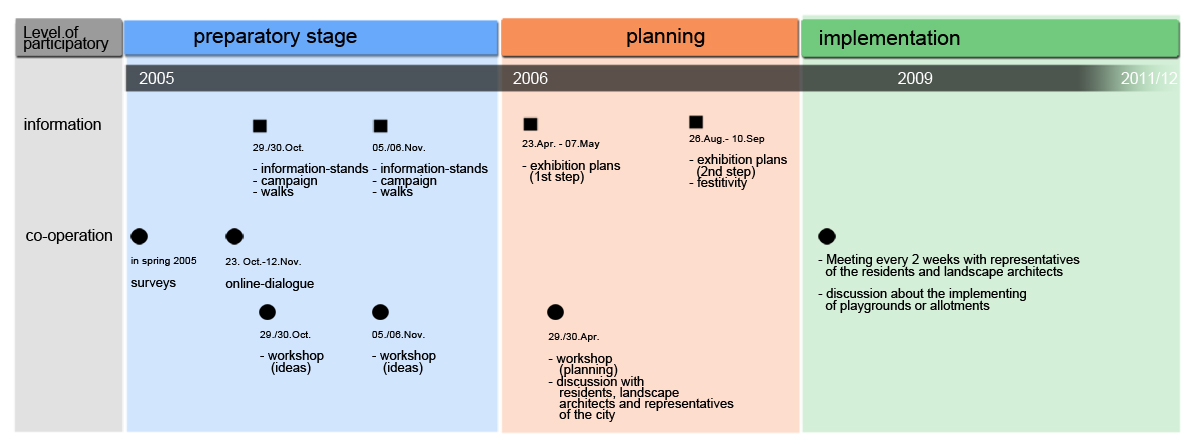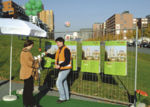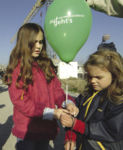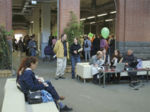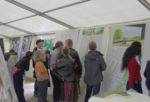Gleisdreieck (Railway Triangle) Berlin, Germany: Difference between revisions
Minolpirol (talk | contribs) |
Minolpirol (talk | contribs) |
||
| Line 107: | Line 107: | ||
Image:Participation6.jpg|Children-Participation | Image:Participation6.jpg|Children-Participation | ||
Image:Participation7.jpg|Exhibition of the plans (Step 1) | Image:Participation7.jpg|Exhibition of the plans (Step 1) | ||
Image:Participation8.jpg| | Image:Participation8.jpg|Workshop (planning) | ||
</gallery> | </gallery> | ||
Revision as of 16:50, 10 January 2010
back to Project Biography List
Rationale: Why is this case interesting?
The area “Gleisdreieck”, altogether about 42ha large, is the last inner-city green space area to develop in Berlin downtown. The competition on the area “Gleisdreieck” was arranged as an experiment and prototype to apply both a high challenging, innovative design and the agreement with the interested public through the close involvement.
Author's personal background
Bachelor of Science in Landscape Architecture in 2008 at Beuth Hochschule für Technik, Berlin. Since Oct. 2009 studying International Master of Landscape Architecture at Nürtingen-Geislingen University.
Process Biography Scheme
Who initiated the project and why?
The area, located in Berlin downtown, in the south of Potsdamer Place, was railway property over hundred of years until the 80s and became fallow then. After the reunification of East and West Germany, it was considered to use the area for the german state horticultural show, but then it was used as the central logistic place (until 2004) for the construction of the buildings on Potsdamer Place, the biggest construction site in Europe at that time.
After finishing the construction work on Potsdamer Place the area was a place that through the years of inaccessibility became perceived by the population as a no man's land, rank growthed open field or fallow.
The city-state of Berlin (Senate Department for City Development) initiated the open international competition (in 2 steps) to create a park from the history of the place, where the historical references should be taken up and incorporated into a new utilization concept as well as to amand the social structures in this area.
When was public participation most intensive?
During the preparatory stage public participation was most intensive to define all the requirements and wishes from the stakeholders/residents for the new park. The main results from the surveys, online-dialogue, workshops etc. were adopted in the international tender.
Second important part was the planning workshop where residents, participating landscape architects and representatives of the city discussed the results of the first plans for revising them for the second step in this competition.
During the implementation phase there’s a meeting every two weeks with representatives of the residents and everybody important involved in building the new park. The residents have the opportunity to take part in decision-making concerning smaller parts of the park like playgrounds or allotments.
Which participation tools have been applied?
- survey (first tested in “focus groups” to determine problems) sent in representive quantity to local residents
- exploration walks as opportunity to get to know the area
- information stands in the city providing flyers to attract and invite people for the exploration walks and workshops
- campaign "Let's go Gleisdreieck Park" (flyers, balloons, give-aways)
- workshops (ideas+planning)
- online-dialogue with information and messageboard
- exhibition of the plans from the participating landscape architects
- meeting every two weeks during the implementation with representatives of the local initiatives and the main responsible persons.
On which level of participation?
Some of the applied tools were informative some co-operative (see above the Process Biography Scheme)
Which stakeholders have been involved?
The public participation was generally addressed to all residents living in an area accessible on foot in 15 Min around the “Gleisdreieck” that does also include shopkeepers and those, who may not live there but will use the park in the future like employees/workers.
Everybody else who was interested could take part in the workshops etc.
Have there been any festivities in order to involve the public?
There were two weekends in Oct./Nov. 2005 with workshops, walks and information-stands that were quite striking in connection with the campaign “Let’s go to Gleisdreick Park”. That wasn’t really a festivity, but many people were interested and it was like a folk festival.
The final presentation of the plans and the announcement of the winner of the competition took place on a festivity.
Who made the major decisions and when?
In this case it’s difficult to determine who made the major decisions because there was and still is quite a close collaboration with all people involved that is influencing the decisions. But considering the fact that the city-state of Berlin initiated the public participation and the local residents can’t decide on their own, it’s assumably the state-city of Berlin that make most of the major decisions.
Image Gallery
References
back to Project Biography List

